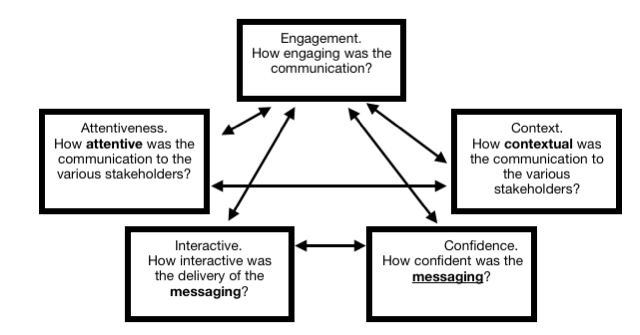Over the past few months I have sat through many meetings. A series of them had to do with internal communications. Part of my work is also researching machine learning and artificial intelligence. So I thought it would be rather interesting if I could use the minutes of the meetings and generate a few words, given that I want to draft an email where I could use most of the words used and frame sentences. This was the result.
phone imprint stink google pass motivate drill cycle direct hypnotise present convert extend infuse transform crack present spell convert extend clothe infuse transform leap return ponder receive strain mix achieve scatter reach classify impress pay crowd mislead approve damage deal conserve thrust
At first glance it looks like a random set of words which have no correlation to each other, but on tracing back to how the selection was made, the answer was rather surprising. All these words were from the section where it called for action to be taken. I could probably sit around and use these words as a teeing ground and draft a meaningful email, but that is a question for later. In golf, a tee is normally used for the first stroke of each hole. The area from which this first stroke is hit is in the rules known as the teeing ground.
Anyway, back to to random list, the learning methodology of machine learning, looked at the words used most often and displayed them with a count of the frequency they were used. In a way, this is one of the most often used frameworks for measuring the effectiveness of communication. A framework where the words used and the impact made is in a large sense – the effectiveness of a PR exercise.
Measuring the effectiveness is dependent on the purpose of the measurement plan. The core components of a plan include:
- Why measure communication quality or effectiveness?
- How will the measurement be used?
- What needs to be communicated and why?
- Who are the primary stakeholders?
- How will the stakeholders be involved in the process?
One important point to be understood here is the sequence of the components. The first component deals with the “WHY?” question. Quite often this is ignored in the larger interest and the discussion on the reach or effectiveness of the message is just another exercise only for functional hygiene of process. This question requires a very large investment of time and dialogue to differently answer “quality” and “effectiveness”. In some way my algorithm for mining words from the minutes of the meetings followed this and hence the pulling the action or “imprint” words. An answer to this “why?” is in effect drawing the foundation of the framework of what is the answer the measurement is being set for. Is it just for an imprint or number of impressions or the visibility of the message into an action of driving or drilling the message. What is the recall and what is the comprehension of the message.
Having answers to this drives to the next component of the framework of how the course correction will be implemented. An understanding of the measurement will help craft and strategise a communication plan which has the answers built in. These answers are for the function of communication to address what needs to be communicated and why. The next is to “who?”. In the previous articles of X-Axis there has been an in-depth study of who stakeholders are and why they are important in the process of communication. The context in the previous articles were around crisis but now the context is broadened to the function of corporate communication.
The measurement framework of any effectiveness of communication relies on relationships. The relation ship of the reader or consumer of the message; the relationship of the sender of the message and the relationship of the message to the context of importance. These are the linkages that provide a road map of sorts to a communication strategist. An effective measurement of the impact of any communication, be it internal or external, sharpens focus on the various relationships to achieve an optimum advantage. Sophisticated toolkits, involving latest technological inputs, are being used to implement evaluation programs without proper knowledge of their impact on the stakeholders. At its most basic level an effectiveness measurement links as below.

The views and opinions published here belong to the author and do not necessarily reflect the views and opinions of the publisher.



Leave a comment